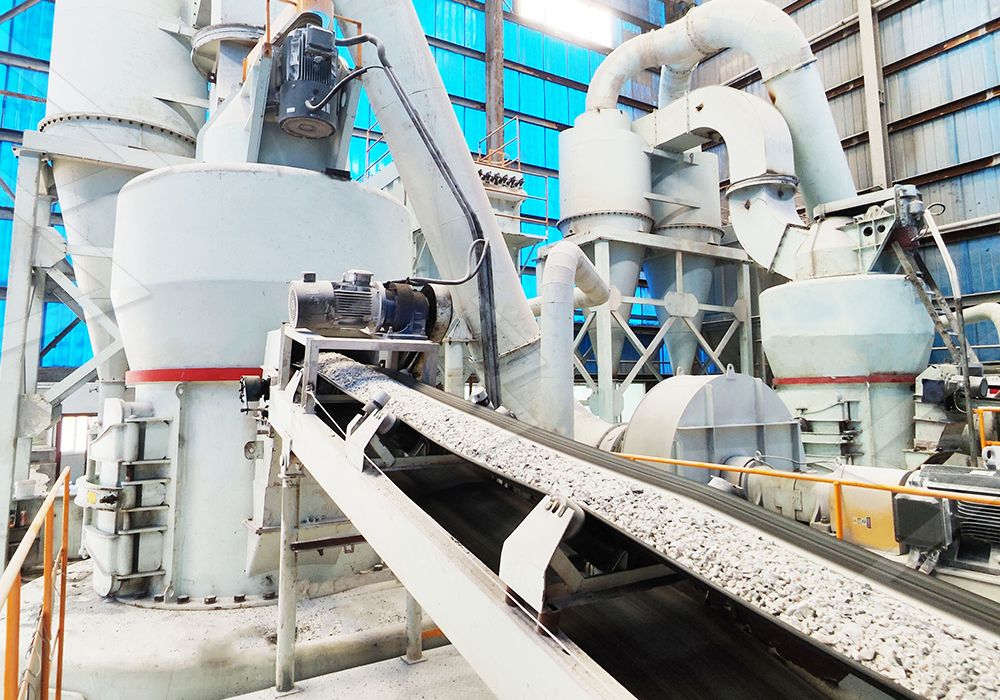Is a 150 Mesh Limestone Grinding Mill with 7 TPH Output Cost-Effective for CFB Processes?
Is a 150 Mesh Limestone Grinding Mill with 7 TPH Output Cost-Effective for CFB Processes?
Circulating Fluidized Bed (CFB) technology has revolutionized clean coal combustion and industrial processes worldwide. A critical component of CFB system efficiency lies in the preparation and injection of sorbent materials, typically limestone, which requires precise particle size distribution around 150 mesh. The question of whether a grinding mill producing 7 tons per hour at this specification represents a cost-effective solution deserves thorough examination from multiple technical and economic perspectives.
The Critical Role of Particle Size in CFB Applications
In CFB systems, limestone serves as a sulfur capture medium, reacting with SO₂ emissions to form calcium sulfate. The efficiency of this reaction is heavily dependent on particle size distribution. At 150 mesh (approximately 106 microns), limestone particles provide optimal surface area for reaction while maintaining sufficient mass for proper fluidization within the bed. Too fine, and particles elutriate from the system; too coarse, and reaction efficiency drops dramatically.

The 7 TPH output requirement typically corresponds to medium-scale industrial operations or multiple smaller units. This production rate must be evaluated not just in isolation, but within the context of continuous operation, maintenance requirements, and energy consumption over the equipment’s lifecycle.
Beyond Initial Capital: Total Cost of Ownership Analysis
Traditional evaluation methods often focus disproportionately on initial equipment costs, overlooking critical operational factors that determine true cost-effectiveness. For CFB applications, where mill operation is continuous and downtime directly impacts emission compliance, several factors demand consideration:
- Energy consumption per ton: High efficiency mills can reduce power costs by 30-50% compared to conventional designs
- Maintenance frequency and costs: Designs that minimize wearing parts and simplify maintenance significantly impact operational expenses
- System integration: Mills that incorporate drying, grinding, and classification in a single unit reduce auxiliary equipment costs
- Product consistency: Precise particle size control minimizes sorbent consumption and improves SO₂ capture efficiency
Advanced Mill Technologies for CFB Applications
When evaluating grinding solutions for CFB limestone preparation, several advanced mill designs offer compelling advantages. Among these, our MW Ultrafine Grinding Mill presents particularly interesting characteristics for operations requiring precise control at 150 mesh.
The MW series, with its capacity range of 0.5-25 TPH, comfortably encompasses the 7 TPH requirement while providing operational flexibility. Its innovative design features higher yielding capacity with lower energy consumption – achieving 40% higher production capacity than jet mills and double the output of ball mills with equivalent power input. For CFB operations, where energy costs represent a significant portion of operating expenses, this efficiency translates directly to improved cost-effectiveness.

Another noteworthy solution for operations requiring exceptional stability is our LUM Ultrafine Vertical Grinding Mill. With its capacity range of 5-18 TPH, it aligns well with the 7 TPH target while incorporating advanced German powder separating technology. The LUM mill’s double position-limiting technology ensures operational stability – a critical factor in CFB processes where consistent sorbent quality is non-negotiable.
Operational Considerations for Continuous CFB Processes
CFB operations typically run continuously for extended periods, placing exceptional demands on equipment reliability. Mill designs that incorporate external lubrication systems, such as the MW Ultrafine Grinding Mill, enable maintenance without production interruption. The absence of rolling bearings and screws in the grinding chamber eliminates common failure points, while the efficient pulse dust collector ensures environmental compliance – a crucial consideration for facilities operating under strict emission regulations.
For operations where space constraints exist or future expansion is anticipated, the compact footprint of modern vertical mills provides additional advantages. The LUM Ultrafine Vertical Grinding Mill’s reversible structure facilitates easier maintenance access, reducing mean time to repair and associated production losses.

Conclusion: Evaluating True Cost-Effectiveness
A 150 mesh limestone grinding mill with 7 TPH output can indeed be cost-effective for CFB processes, provided the selection criteria extend beyond simple purchase price. The true economic assessment must consider energy efficiency, maintenance requirements, product consistency, and system reliability over the equipment’s operational lifespan. Advanced mill technologies, particularly those designed with CFB applications in mind, offer significant advantages that translate to improved operational economics and enhanced process reliability.
Frequently Asked Questions
What makes 150 mesh particularly important for CFB applications?
150 mesh (approximately 106 microns) represents the optimal balance between surface area for efficient sulfur capture and particle mass for proper fluidization within the CFB system. Finer particles may elutriate, while coarser particles reduce reaction efficiency.
How does mill selection impact overall CFB system efficiency?
Proper mill selection affects sorbent consumption rates, emission compliance, energy consumption, and maintenance downtime. An efficient mill can reduce limestone consumption by ensuring optimal particle size distribution while minimizing operational costs.
What maintenance features should I prioritize for continuous CFB operation?
External lubrication systems, easy access to wearing parts, minimal internal components subject to wear, and robust construction materials significantly impact maintenance requirements and operational reliability in continuous applications.
How significant are energy savings with modern mill designs?
Advanced mills can reduce energy consumption by 30-50% compared to conventional designs, representing substantial operational cost savings given the continuous nature of CFB processes.
Can the same mill handle variations in limestone characteristics?
Modern mills with adjustable operating parameters and robust designs can accommodate normal variations in feed material, though significant changes in hardness or moisture content may require operational adjustments or auxiliary equipment.
